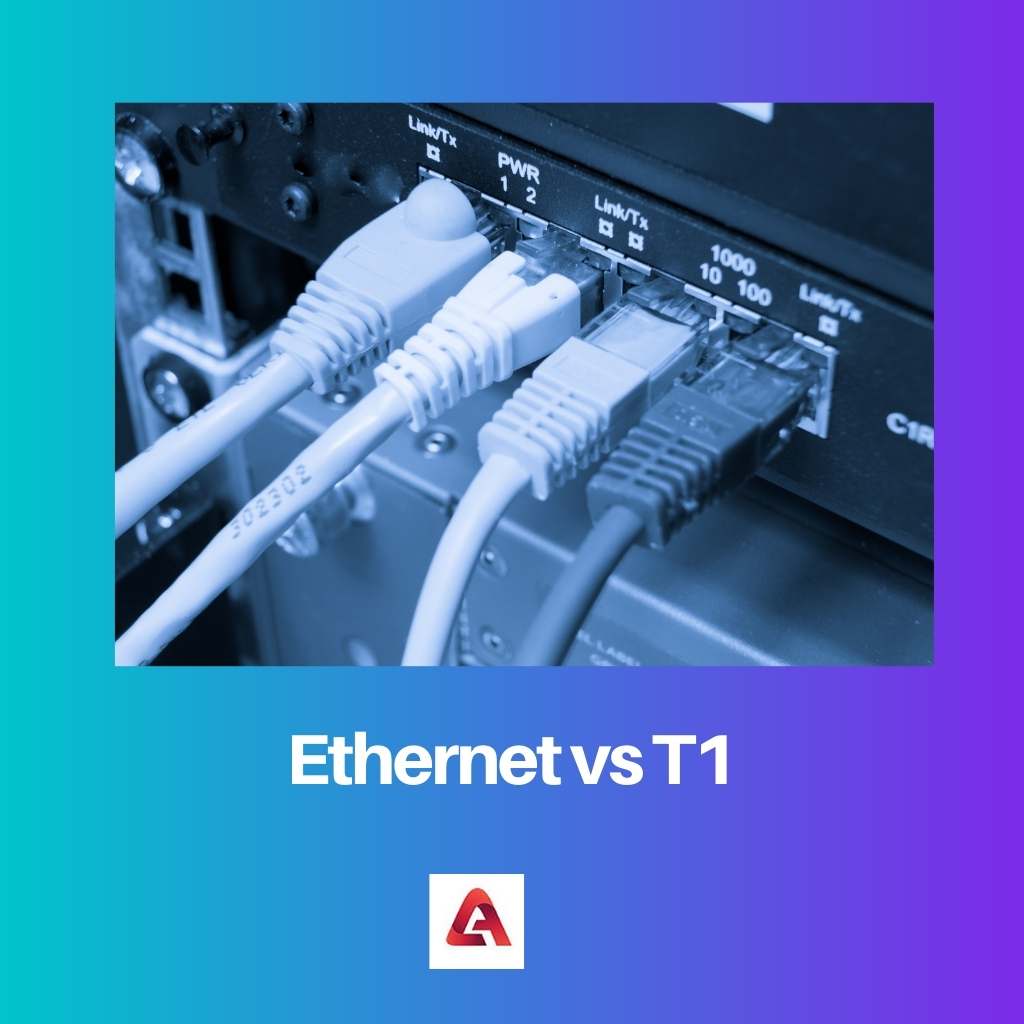Internet connectivity is a revolutionizing factor around which the entire world revolves. Every connection has certain parameters which the customers evaluate before installation.
The two most common and popular data and Internet connectivity that dominates most business organizations are Ethernet and T1. Both technologies have specific features.
Key Takeaways
- Ethernet offers higher bandwidth than T1, enabling faster data transfer speeds.
- T1 lines provide dedicated connections, ensuring consistent performance and minimal downtime.
- Ethernet connections are more cost-effective than T1 lines, making them a popular business choice.
Ethernet vs T1
Ethernet is a system for connecting a number of computer systems to form a local area network, it is a commonly used, cost-effective method that supports high-speed connections. T1 lines are dedicated, high-reliability connections that offer a fixed data rate and are used for business or institutional internet access.

Ethernet is ideally connected to a cable of a WiFi router or modem to the Internet entry port, which can even be a telephone line. Ethernet can even have several OSI layers.
The rate of the service depends on the area and the amount of work. The bandwidth offered by Ethernet is high and at a lower cost.
On the other hand, T1 was developed by Bell System. The form of Internet connection in T1 service is T1 voice and data line.
The point-to-point line is ideal for business organizations with low network traffic. T1 is the most widely used Internet connection across various business organizations.
Comparison Table
| Parameters of Comparison | Ethernet | T1 |
|---|---|---|
| Scalability | Highly scalable and requires additional equipment | Not highly scalable and affects the bandwidth upon upgrade of equipment |
| Equipment | Only an Ethernet WAN interface | Requires several complex processes and routers |
| Range | Limited or restricted range | Wide range |
| Speed | High speed of 100 Mbps to 10 Mbps | Comparatively slow speed of 1.5 Mbps |
| Ideal traffic | Ethernet is ideal for high traffic networks | T1 is ideal for low traffic networks |
What is Ethernet?
Ethernet refers to the networking technology that provides interconnection between multiple devices. The connected digital devices can transfer information across the network.
Ethernet has a minimum speed of 10 megabits per second in data transmission. Some organizations and services can have a speed of even above 1 gigabit per second.
Ethernet services are inexpensive, and the installation is also budget-friendly, which minimizes the overall cost structure of the service. The rate of the service depends on the area and the amount of work.
The bandwidth offered by Ethernet is high and at a lower cost. The SLA Provided in Ethernet is 99.9% uptime, and it can even increase to 100% with proactive monitoring and failover.
The Ethernet service requires additional equipment and is easily scalable. The service provided by Ethernet is reliable as the link bonding has older technology.
Ethernet can even have several OSI layers. However, any impediment does not affect and impact the entire connection.
Ethernet is available nationwide and mainly in metro cities. The performance provided is QoS with VoIP.
The speed of Ethernet service does not fluctuate and provides the highest common speed between the ends of the port, that is, the sending and the receiving port. Ethernet is ideally connected to a cable of a WiFi router or modem to the Internet entry port, which can even be a telephone line.

What is T1?
T1 refers to the technology in telecommunications that carries information across long distances. T1 technology can potentially carry information in the form of voice and data.
The T1 has a dedicated line for data transmission. The dedicated line of T1 can deliver only 1.5 megabits per second in terms of speed of data transmission.
The circuit of T1 has copper lines, also known as fibre optic cables. T1 lines have bonded lines, and the number of bonds determines the speed of data transmission.
That even lines can provide “always-on” Internet access. Hence the performance of T1 is pretty high.
T1 also has a robust service level agreement. The repairs and performance are provided under a guaranteed time frame.
T1 was developed by Bell System. The T1 services are expensive, and the overall cost structure is quite high.
It contains two twisted pairs of copper wires. The T1 wires can eliminate the costs of interoperability issues.
The number of T1 costs depends on the number of T1 circuits which are deployed. However, T1 is not highly scalable and can disrupt upgrading the equipment.
The QoS (Quality of Service) has VoIP. The dedicated speed does not fluctuate, yet any upgrade does disrupt the connection.
The form of Internet-connect in T1 service is T1 voice and data line. The point-to-point line is ideal for business organizations with low network traffic.
The extra number of connected T1s increases the speed of the connection by 1.5 Mbps.
Main Differences Between Ethernet and T1
- Ethernet is a technology used in networking, while T1 is the technology used in telecommunications.
- Ethernet carries information only in the form of data, while T1 carries information in the form of both voice and data.
- Ethernet can carry information over a small and limited distance, while T1 can carry information over a long and wide distance.
- Ethernet is highly scalable and can be enjoyed in higher bandwidth, while T1 is not scalable and offers lower bandwidth.
- Ethernet services are best for organizations or customers on a budget, while T1 services are best for customers who are ready to splurge a little extra.




